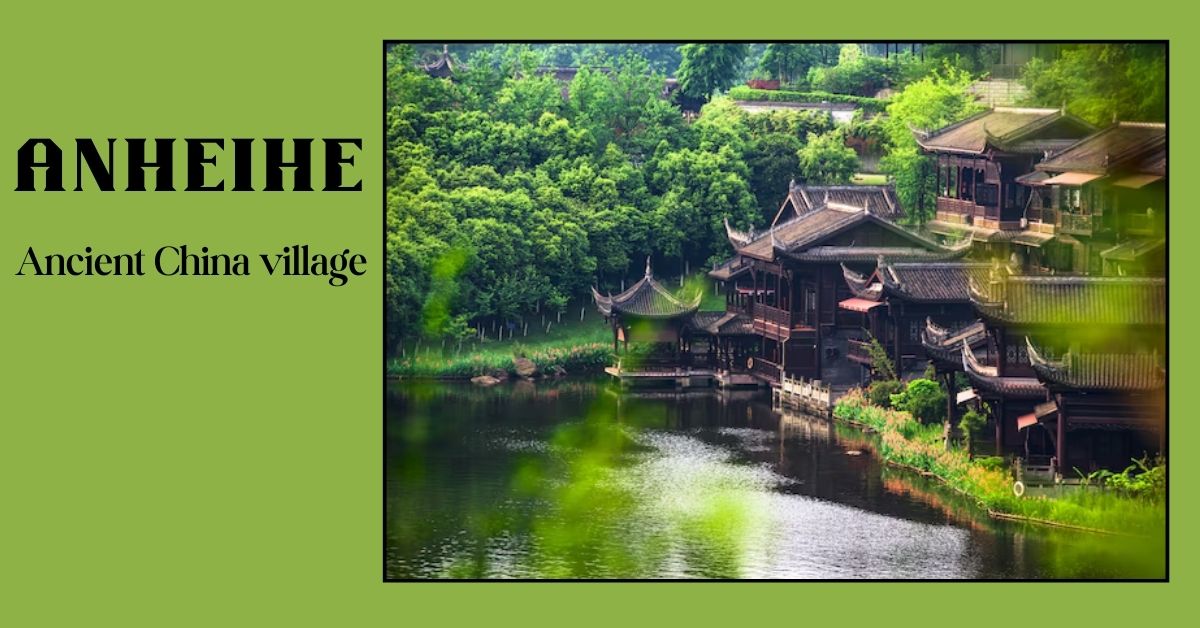Anheihe, a hidden gem in China’s historical landscape, is an ancient village that embodies the rich cultural and architectural heritage of the past. Nestled in a remote region, this village has preserved its authenticity for centuries, offering a glimpse into China’s ancient traditions, customs, and way of life. Unlike modernized towns, Anheihe remains untouched by time, with its well-preserved wooden houses, cobblestone pathways, and historical landmarks. Exploring this village is like stepping into a living museum, where every corner tells a story of the past.
The Origins and History of Anheihe
Anheihe’s history dates back over a thousand years, with its roots embedded in ancient Chinese civilization. Founded during the early dynasties, the village played a crucial role in trade, agriculture, and traditional craftsmanship. Historians believe that Anheihe was once a bustling center for merchants and artisans, contributing significantly to the regional economy. Over time, while cities around it evolved, Anheihe retained its original character, making it a treasure trove for history enthusiasts.
Architectural Marvels of Anheihe
The village’s architecture reflects traditional Chinese aesthetics, characterized by wooden houses with curved roofs, intricate carvings, and elegant courtyards. Many structures in Anheihe are built using ancient construction techniques that have stood the test of time. The village’s layout follows feng shui principles, ensuring harmony with nature. Every building, from ancestral halls to tea houses, showcases exquisite craftsmanship that speaks of a bygone era.
Cultural Traditions and Festivals
Anheihe is a hub of traditional Chinese customs and rituals, many of which have been passed down through generations. The villagers celebrate various festivals with grandeur, including the Lunar New Year, Lantern Festival, and Mid-Autumn Festival. These celebrations feature dragon dances, lantern displays, and folk performances, attracting visitors who wish to experience authentic Chinese culture. The village elders continue to preserve age-old traditions, ensuring that Anheihe remains a cultural stronghold.
The Role of Anheihe in Ancient Trade
Historically, Anheihe was an essential stop for traders traveling through China. Its strategic location made it a vital point for the exchange of goods, including silk, ceramics, and spices. The village’s market was once filled with merchants from different regions, contributing to its economic prosperity. Though the trade routes have changed, remnants of Anheihe’s commercial past can still be seen in the old marketplace and antique shops.
Anheihe’s Connection to Chinese Mythology
Legends and myths surround Anheihe, adding a mystical aura to the village. Folklore speaks of ancient warriors, hidden treasures, and spirits that protect the land. Some stories tell of a legendary scholar who lived in the village and possessed profound wisdom. These myths have been passed down orally, becoming an integral part of Anheihe’s identity and captivating those who visit.
Local Cuisine and Traditional Food
The culinary traditions of Anheihe remain deeply rooted in Chinese heritage. Villagers prepare meals using locally sourced ingredients, maintaining authentic flavors. Some of the must-try dishes include hand-pulled noodles, steamed buns, and herbal soups infused with traditional Chinese medicine. The tea culture in Anheihe is also noteworthy, with centuries-old tea houses serving aromatic brews that reflect the region’s tea-making expertise.
Art and Handicrafts of Anheihe
Handicrafts play a vital role in Anheihe’s culture, with skilled artisans continuing to produce traditional artworks. The village is known for its intricate wood carvings, silk embroidery, and handmade pottery. These crafts, once traded across ancient markets, still hold cultural significance. Many visitors purchase these unique items as souvenirs, supporting the local artisans who keep these traditions alive.
Religious and Spiritual Influence
Religion and spirituality have played a crucial role in shaping Anheihe’s identity. The village is home to ancient temples and shrines where locals worship deities and ancestors. Buddhism and Taoism have influenced the spiritual practices of Anheihe, with many villagers following rituals that have remained unchanged for centuries. Pilgrims and monks often visit these sacred sites, adding to the village’s spiritual ambiance.
The Natural Beauty Surrounding Anheihe
Anheihe is not only known for its historical significance but also for its breathtaking landscapes. Surrounded by lush greenery, rivers, and mist-covered hills, the village offers a serene escape from urban life. The scenic beauty of Anheihe attracts nature lovers who enjoy hiking, photography, and peaceful retreats. The tranquil environment complements the village’s ancient charm, making it a perfect destination for those seeking solitude.
The Preservation Efforts for Anheihe
Preserving Anheihe’s historical and cultural integrity is a significant challenge. The local government and heritage organizations have taken measures to protect the village from modernization. Restoration projects aim to maintain the authenticity of ancient structures while ensuring they remain safe for future generations. Tourism is regulated to prevent excessive commercialization, allowing Anheihe to retain its original essence.
Tourism and Visitor Experience
Although relatively unknown to mainstream tourists, Anheihe has been gaining attention as an off-the-beaten-path destination. Visitors who explore the village appreciate its peaceful atmosphere, rich history, and friendly locals. Walking tours, cultural workshops, and traditional performances enhance the experience, providing deep insights into the village’s heritage. Unlike crowded tourist spots, Anheihe offers an intimate and immersive journey into ancient China.
The Influence of Anheihe on Chinese Literature
Many poets and writers have drawn inspiration from Anheihe’s timeless beauty. Ancient Chinese literature features references to villages resembling Anheihe, describing them as places of wisdom, tranquility, and artistic inspiration. The village’s poetic scenery and historical depth continue to inspire modern storytellers who seek to capture its essence in their works.
Challenges Faced by Anheihe Today
Despite its historical significance, Anheihe faces challenges in maintaining its identity. Urbanization, environmental changes, and economic shifts pose threats to its preservation. Younger generations are moving to cities for better opportunities, leaving behind ancestral homes. Efforts to sustain the village require balancing tradition with modern needs, ensuring that Anheihe does not become a forgotten relic of the past.
Why Anheihe Remains a Timeless Treasure
Anheihe stands as a living testament to China’s ancient past, offering an unfiltered glimpse into a world untouched by modernity. Its rich history, breathtaking architecture, and enduring traditions make it a unique cultural landmark. As visitors step into this enchanting village, they are transported back in time, experiencing the legacy of a civilization that continues to inspire. Anheihe’s story is one of resilience, heritage, and timeless beauty, making it a must-visit destination for history and culture enthusiasts.
Conclusion
Anheihe is a remarkable example of China’s ancient heritage, preserving its history, culture, and traditions for generations. Unlike many modernized villages, it remains an untouched relic of the past, offering visitors a rare glimpse into authentic Chinese life. Its architectural beauty, cultural richness, and deep historical significance make it a unique destination for history enthusiasts and travelers seeking an immersive experience. While Anheihe faces challenges due to urbanization and modernization, dedicated preservation efforts continue to protect its legacy.
FAQs
Is Anheihe open to tourists?
Yes, Anheihe welcomes visitors, though tourism is carefully managed to preserve its authenticity.
What is the best time to visit Anheihe?
Spring and autumn are ideal, offering pleasant weather and vibrant cultural festivities.
Are there accommodations available in Anheihe?
Yes, the village offers traditional guesthouses where visitors can experience authentic Chinese hospitality.
How do I get to Anheihe?
The village is accessible by road from major cities, with guided tours available for travelers.
What makes Anheihe different from other ancient villages?
Anheihe remains largely untouched by modernization, preserving its traditional architecture, culture, and customs.

